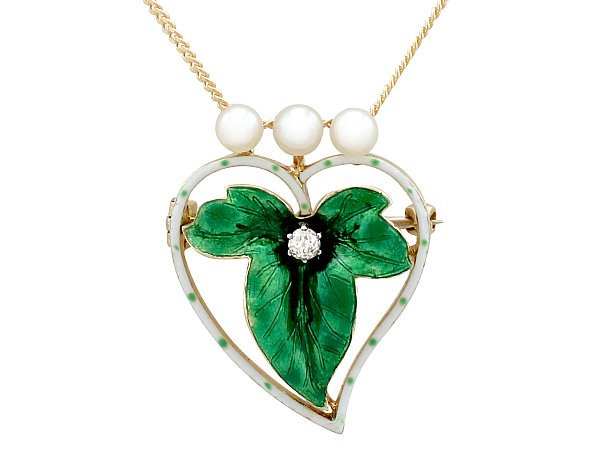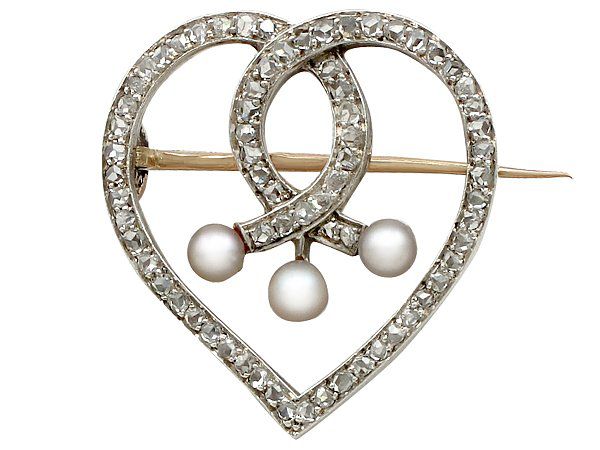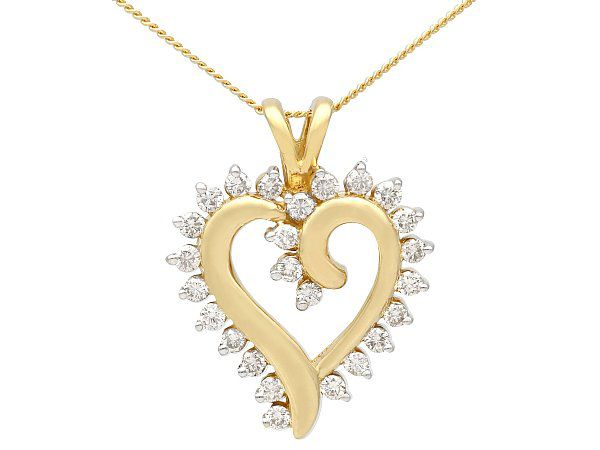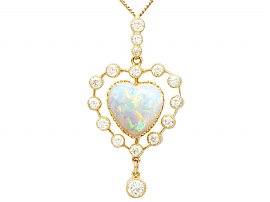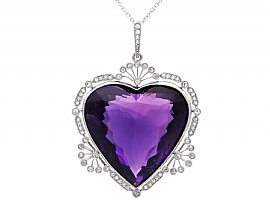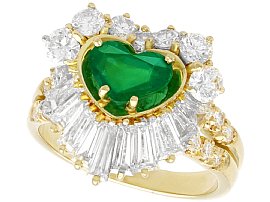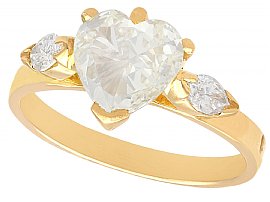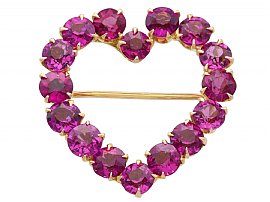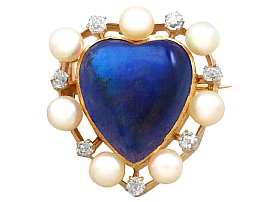Witch’s Heart Jewellery
One of the best things about working with antique jewellery is coming across a long-forgotten style to research. Among the many romantic jewellery motifs of times gone by is the stunning witch’s heart jewellery. Today, we’re rediscovering this beautiful jewellery and uncovering some witch’s heart jewellery among our own collections.
What Is Witch’s Heart Jewellery?
Understandably, most people haven’t heard of witch’s heart jewellery. Although the heart symbol has been ubiquitous since the 14th century, witch’s hearts were most popular in 17th century Scotland. Even beginner jewellery fanatics can recognise this jewellery style by its signature heart shape. The heart is open, with only its outline visible, and its point curves subtly to one side. The first witch heart designs were brooches, although over time the motif has been used in a vast array of jewellery items.
It is difficult to pinpoint one single origin for witch’s heart jewellery. Its connection with Scotland is the most well documented, but it was also a popular symbol with indigenous peoples of North America. Witch’s heart jewellery was sometimes given in trades, being exchanged for furs and other materials. Before long, tribes like the Five Nations and Iroquois were creating witch’s heart pieces of their own, modifying the design as they went.
The History of Witch’s Heart Jewellery
It is unclear whether the Scots originated the design, but it has long held an association with the Highlands. Many believe that the jewellery style originated in Germany, where it was known as ‘Hexenherz’; being worn to protect the wearer against evil spirits as well as witches. Scottish witch’s heart brooches and pendants evolved somewhat into their own design called a ‘Luckenbooth’ or ‘locked booth’ heart. In these designs, the heart shape was surmounted with a crown design and often incorporated a Scottish symbol, such as a thistle. There were also often two hearts interlocking in the Luckenbooth design. The name Luckenbooth comes from the name of locked market booths in Edinburgh, where jewellery was sold from as far back as the 15th century.
By the 1830s, Queen Victoria was crowned, and the jewellery world was forever changed. The queen’s personal love for jewellery - combined with her influential position as the head of the British Empire - meant that styles changed alongside her tastes. Victoria was known as an avid jewellery collector, and her adoration of the heart motif made it immensely popular throughout her reign.
With more standard love-heart shapes becoming very common, the subtle differences of the witch’s heart shape faded somewhat into the background. In the last century, witch’s heart jewellery has not had a resurgence in popularity and many would say it is a style of antique jewellery that is unlikely to be viewed as ‘new’ ever again. For antique jewellery lovers like us, however, that just makes it all the more appealing.
The Symbolism of Witch’s Heart Jewellery
The earliest forms of witch’s hearts were used in jewellery as an omen of good fortune and safety. Wearing a witch's heart was believed to protect the user from evil entities. They were also especially popular as gifts for new-born babies; superstitious people believed that keeping a witch’s heart emblem near their infant would keep them safe from harm from actual witches - whom they believed might otherwise steal milk and even harm the baby itself.
The use of a witch’s heart symbol as a sign of good luck allowed it to evolve into a romantic sentiment over time. The Luckenbooth style of jewellery incorporating two interlocking hearts was used as a loving gesture, the ideal gift between courting young people. Rather than symbolising protection from witches, it became a reference to being ‘bewitched by love’.
